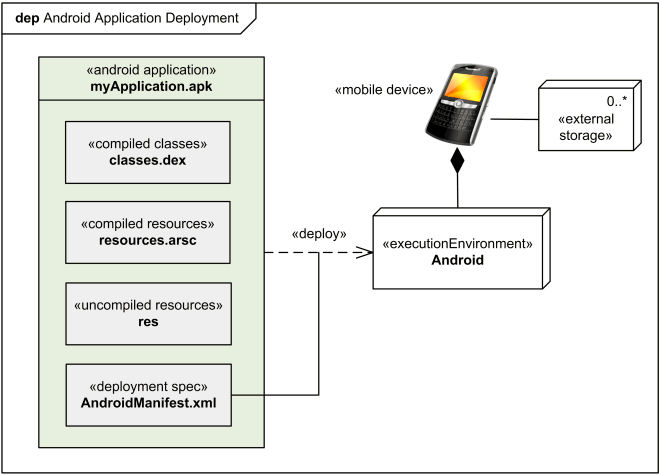Android Application
UML Deployment Diagram Example
This is an example of UML deployment diagram which shows deployment of an application to Android.
Android is a software stack for mobile devices that includes an operating system, middleware and key applications. Android relies on Linux OS for core system services such as security, memory management, process management, network stack, and driver model. The Linux kernel also acts as an abstraction layer between the hardware and the rest of the software stack.
Android applications are written in Java. Android SDK tools compile and package the code along with any required data and resource files into Android application archive file having .apk suffix. The .apk file represents one Android application to be deployed to the Android-enabled mobile devices.

Example of application deployment to Android.
Android applications are composed of one or more application components (activities, services, content providers, and broadcast receivers). Each component performs a different role in the overall application behavior, and each one can be activated individually (even by other applications).
The manifest (deployment specification) file AndroidManifest.xml describes application requirements, such as the minimum version of Android required and any supported hardware configurations, and it also declares all components in the application.
With Android API Level 8 or later, application could be installed on the external storage (for example, on the SD card). This is an optional feature that could be requested for the specific application using a manifest attribute. By default, application is installed on the internal storage of the mobile device and cannot be moved to the external storage.